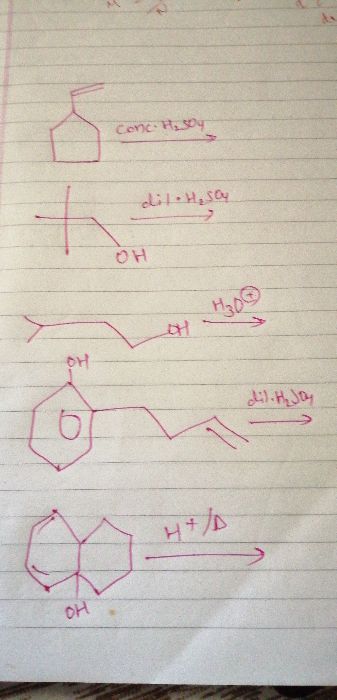CBSE Class 11-science Answered
How can a t-butyl substituent be used as a blocking group in aromatic electrophilic substitutions?
Asked by Topperlearning User | 01 Jun, 2016, 14:54: PM
The Friedel-Crafts alkylation can be reversed, especially when a 3° alkyl group such as Me3C is present.
Dealkylation is affected with AlCl3 by transfer of Me3C+ to another arene, used as the solvent, or at high temperatures by protonation with H+ and loss of Me3C+as Me2C=CH2.
Me3C- , introduced into a ring, is used to block an active position and/or to direct another group into the ring , and then removed.
Answered by | 01 Jun, 2016, 16:54: PM
CBSE 11-science - Chemistry
Asked by maibamjohnny89 | 15 Jan, 2022, 21:38: PM
CBSE 11-science - Chemistry
Asked by dubeyanubhav65 | 18 Jan, 2021, 21:52: PM
CBSE 11-science - Chemistry
Asked by guptaserendri | 01 Jul, 2020, 15:58: PM
CBSE 11-science - Chemistry
Asked by Topperlearning User | 24 Jul, 2014, 15:46: PM
CBSE 11-science - Chemistry
Asked by Topperlearning User | 25 Jul, 2014, 07:11: AM
CBSE 11-science - Chemistry
Asked by Topperlearning User | 01 Jun, 2016, 14:59: PM
CBSE 11-science - Chemistry
Asked by Topperlearning User | 01 Jun, 2016, 14:54: PM
CBSE 11-science - Chemistry
Asked by Topperlearning User | 04 Jun, 2014, 13:23: PM
CBSE 11-science - Chemistry
Asked by Topperlearning User | 25 Jul, 2014, 07:18: AM
CBSE 11-science - Chemistry
Asked by Topperlearning User | 01 Jun, 2016, 14:54: PM


